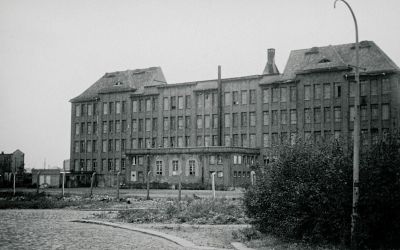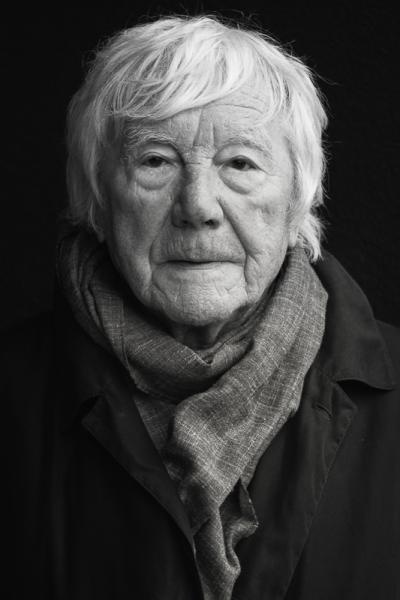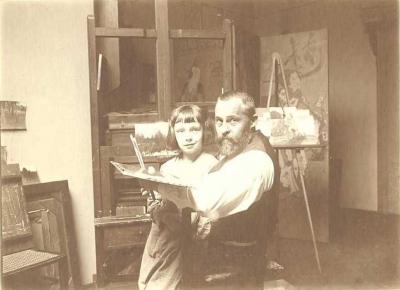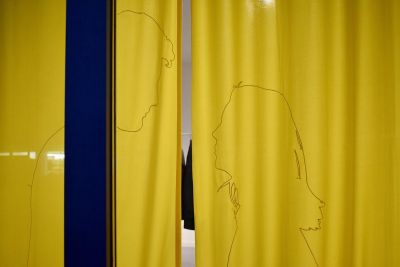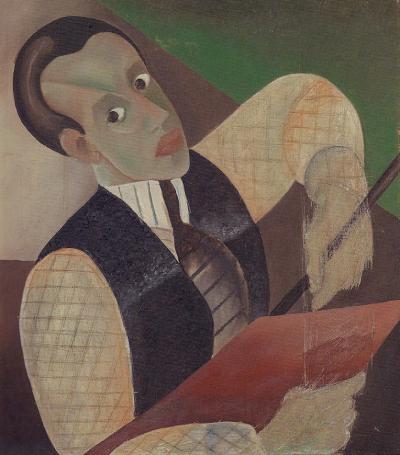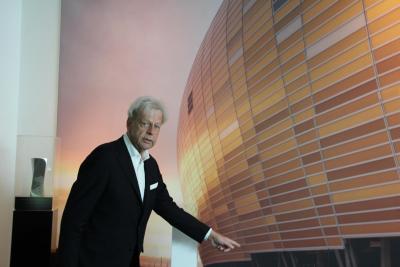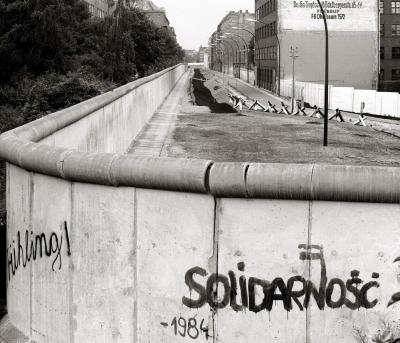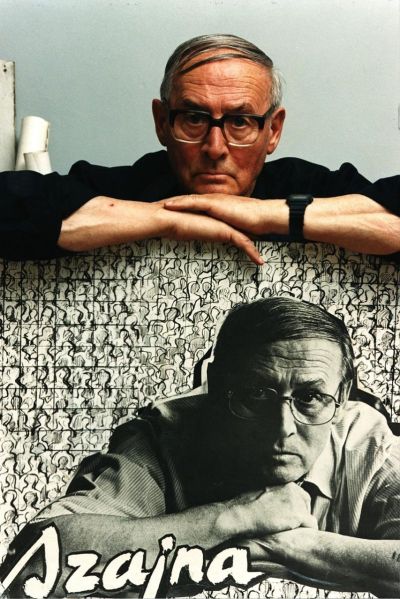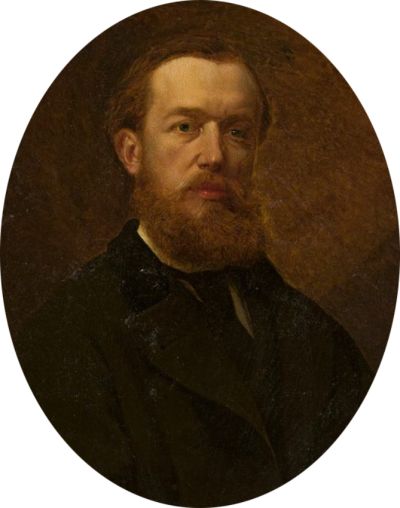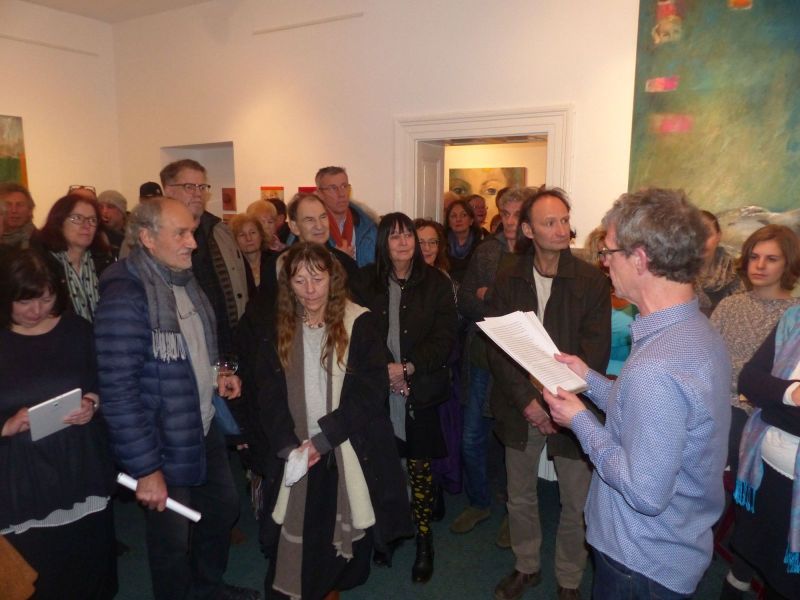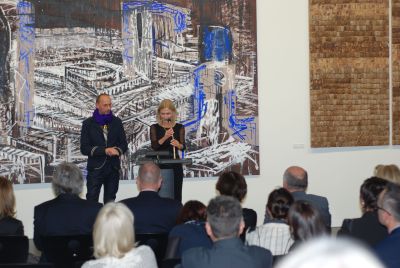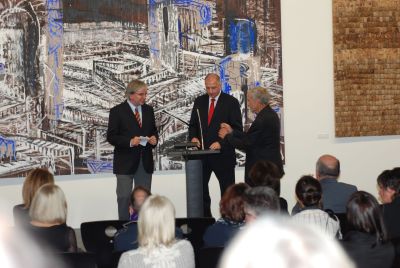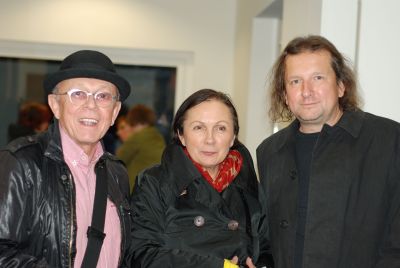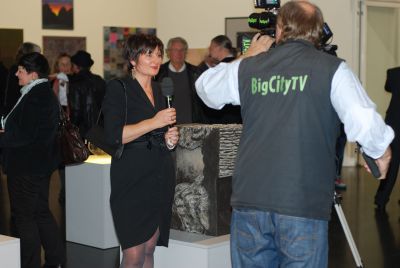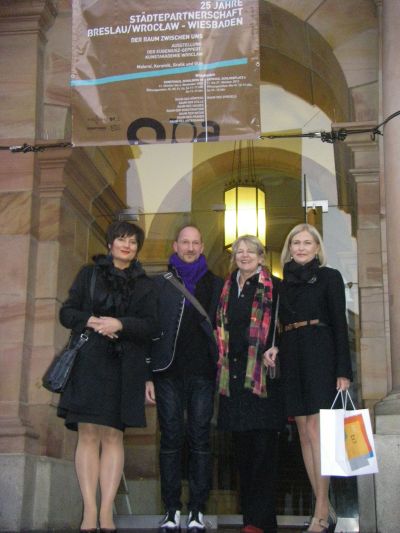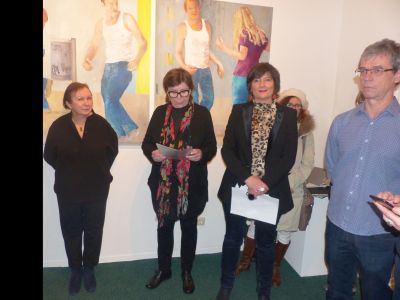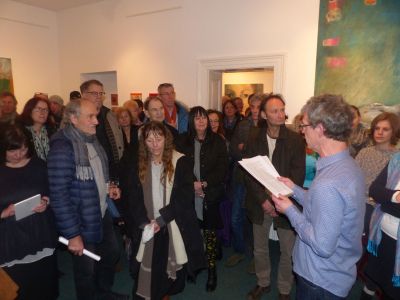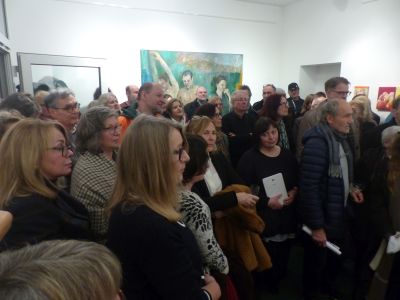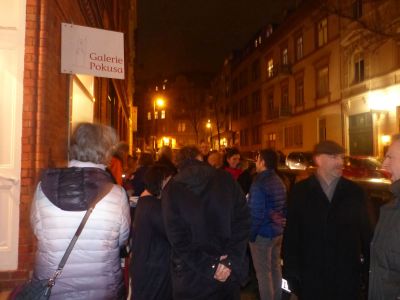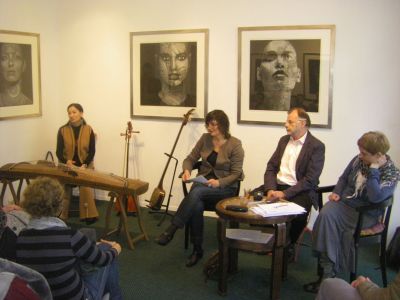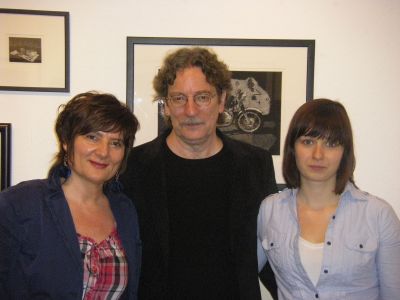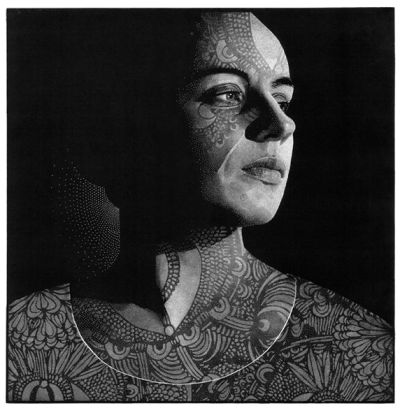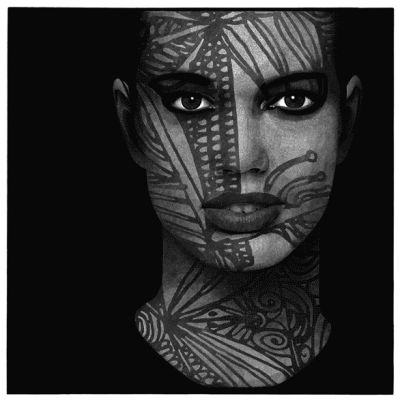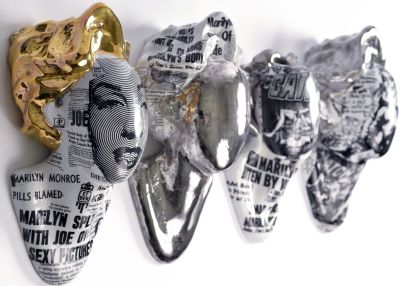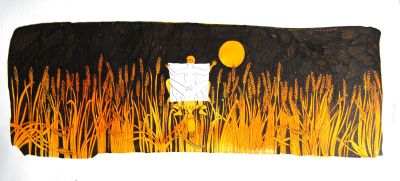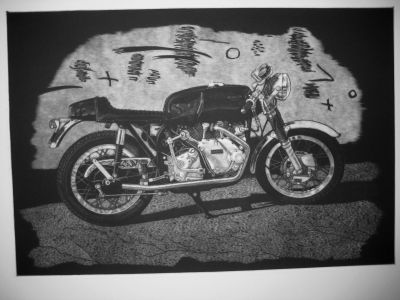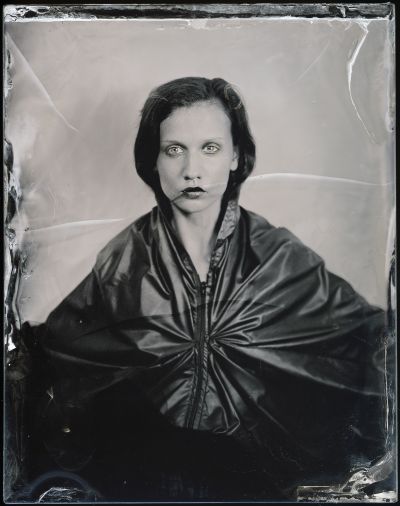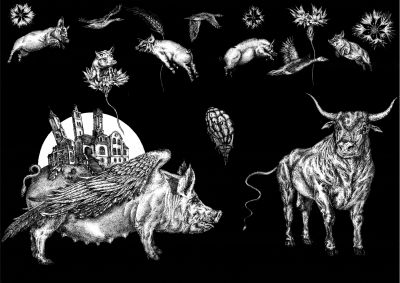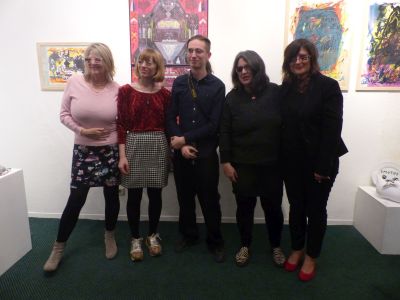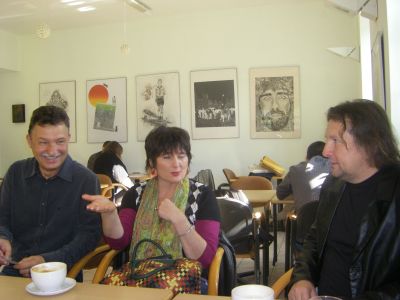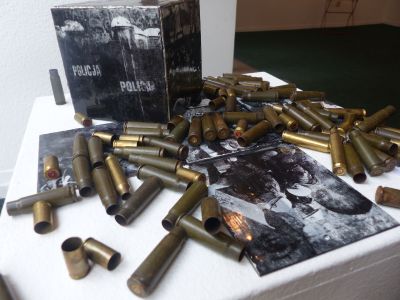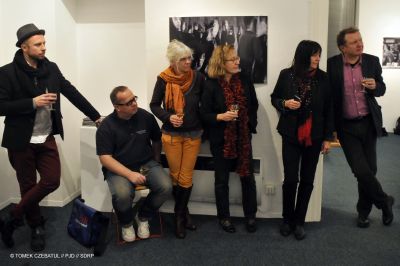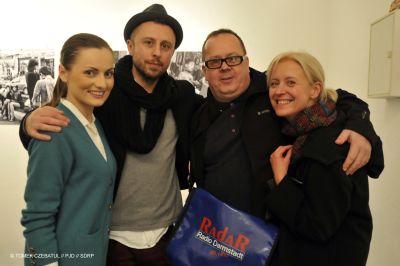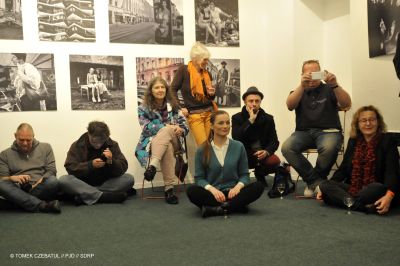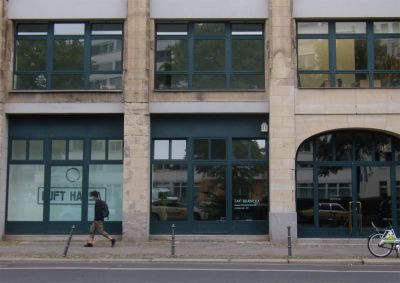“PoKuSa” – gallery for contemporary Polish art in Wiesbaden
Mediathek Sorted

Polish artists from Germany
The gallery space is also used by Polish artists based in Germany. Magda Klemm, originally from Warsaw and now living in Berlin, already exhibited her work here during the early years after the gallery opened. At that time, the exhibition was curated by the painter Barbara Ahlfeldt, who in 2003 presented her own works that border on surrealism. Karl-Karol Chrobok, who graduated from the Academy of Fine Arts in Kraków, showed paintings that stood out for their dense layer of colour and at the same time their sharp lines and contours. Ewa Stefanski, a graduate of the Academy of Fine Arts in Poznań, who has lived in Frankfurt/Main since 1981, is among the artists who most frequently show their works at the “PoKuSa”. The very first exhibition there in 2001 was dedicated to her. 17 years later, her work was the subject of the 100th exhibition in the gallery.[1] The photographer Maciej Rusinek, also from Frankfurt/Main, enjoys an increasing degree of international recognition and is also shown at the “PoKuSa”. The majority of his photographs portray dance theatre, particularly Japanese butoh theatre. Works have also been shown by Alicja Horbowa, who lives near Frankfurt, and the painter and sculptor Artur Bart (“Bartosik”), a graduate of the Academy of Fine Arts in Gdańsk, who has lived in the Rhine-Main region since the late 1980s.
The art market
The exhibitions attract the attention of the local media, which emphasise not only the artistic merit of the works, but also the concept behind the exhibitions. The works by an artist couple from Warsaw, the painter Joanna Krzysztoń and the photographer Grzegorz Rogala, were described in the “Wiesbadener Kurier” as “a fascinating exhibition, a gallery cooperation that was a complete success”.[2] During that period, Joanna Krzysztoń presented 40 small-format works that referenced the story of the way of the cross, and which represented the suffering and feeling of all humans, while Grzegorz Rogala depicted authentic episodes from the lives of his subjects in large-format, digitally edited photographs.
For more than 20 years, Ewa Hartmann and her six-person “PoKuSa” team have expanded their network of contacts and have become an important German partner for artists from Poland. The gallery projects are funded by a range of different institutions, which collaborate within the scope of the partnership between the cities of Wiesbaden and Wrocław, or the regions of Hesse and Greater Poland (Wielkopolska). Here, the fact that the “PoKuSa” is capable of self-financing, like every other gallery in the city, is of key importance. This is both a major challenge and a major achievement. When choosing which artists to show, the gallery aims to provide an insight into unusual artworks on the one hand, while at the same time finding buyers for the artists shown. The opening events are extremely popular – so much so that it’s not unusual for more people to turn up than the gallery can hold.
Now, after more than 100 “PoKuSa” exhibitions, several hundred works have found their way into the hands of private collections in Wiesbaden and the surrounding area. The curator Ewa Hartmann and her husband Michael Grus alone now own more than 100 Polish works of art.
The annual pre-Christmas exhibition, “Winterart”, in which the gallery shows a large number of small-format works at affordable prices, has become particularly popular as a counterpoint to the mass consumption during the festive season. Between five and six shows are organised every year. At the opening events, guests have the opportunity to talk with the artists, meet friends and make new contacts. And of course, it’s possible to take home a piece of the exhibition by purchasing one of the works.
[1] Online press office of the Polish editorial board at Deutsche Welle, 27/2/2019 – Joanna de Vincenz: Setna wystawa w Pokusie, wiesbadeńskim przyczółku sztuki z Polski (The hundredth exhibition in Pokusa, the Wiesbaden bridgehead for art from Poland).
[2] “Wiesbadener Kurier”, 4/11/2008: Polnische Kunst in Doppelschau.











